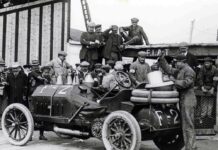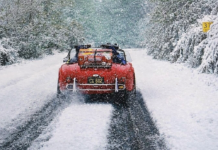Walking around the grounds of Crystal Palace park today, it is difficult to appreciate it was once home to a proper international motor racing circuit that wound around a fishing lake, a maze and collection of life-size model dinosaurs.

Crystal Palace witnessed motorsport in a variety of forms over the course of a century, pre-dating the world famous Brooklands track by some eight years, from its first recorded event in 1899 until safety concerns and local opposition prevailed in 2000.

Shortly after the red flag act had been repealed, motorists began to organise competitiive events for their powered motorcycles, tricycles and automobiles. The park grounds of Crystal Palace in south London offered level pathways suitable for short races and timed sprints. These first meetings were somewhat disorganised but eventually a semblance of order was established. In 1927 a group of enthusiasts persuaded the park trustees to allow the creation of a circular course that wound around the park. The first organised race meeting proved to be a success, attracting 10,000 spectators. A cinder track was also created to cater for the popular speedway motorcycle races that attracted 30,000 spectators.

The famous Crystal Palace circuit
During the 1930s, the chairman of the Crystal Palace park committee proposed the creation of a tarmac surfaced race track to rival that of Donington Park. Three days before construction began, the huge iron and glass ‘Crystal Palace’ building (home of the Great Exhibition of 1851 that gave the park its name), burnt to the ground. Despite this, work commenced in November 1936 and the first meeting was held in April 1937, attracting some of the finest drivers in the UK and Europe. Inevitably the park was given over to the military during 1939 and 1945 and it was not until 1953 that racing resumed with the track reduced from 2.25 to 1.3 miles. But it was the 1960s that saw the park’s golden years. The circuit was updated, as much as possible, and now hosted international races up to Formula 2. In 1964, a relatively unknown Austrian driver, Jochen Rindt, won a hard-fought F2 race, beating many of the top drivers, including Graham Hill, which made both him and the Crystal Palace circuit famous.

The circuit was loved by many drivers but it had its detractors; it was narrow which made overtaking difficult, it had no run-off areas and in places it was lined with unforgiving wooden barriers that claimed numerous cars over the years. As it was located in London it was surrounded by houses whose residents resented the traffic and the noise on race days. Its days were numbered but the 1960s saw many unforgettable races, especially the saloon cars where Minis and Ford Escorts did battle with huge American muscle cars such as Mustangs and Camaros. Drivers such as Jackie Stewart, Ronnie Peterson, Emerson Fittipaldi and Jody Scheckter drove their F2 cars to the limit with Mike Hailwood setting the final lap record at an average speed of 103.39mph. As race cars became faster, the circuit was now considered dangerous and the cost of modifying it proved prohibitive. In the face of local pressure, the circuit closed after hosting its final event in 1972. Much of the track was torn up although a few sections remained. However, all was not totally lost as a local car club was allowed to host an annual event in 1995 with cavalcades and semi-competitive sprints. The first meeting was held in 1995 and it continued until 2000 when the local council decided to replace the remaining track surface with footpaths. Thus ended 100 years of hosting competitive motoring at the park, another sad loss for motorsport.
Words and photos: Trevor Legate






4 – Martin Morris makes adjustments to his (very loud) ERA R11B, September 1972
5 – Charles Lucas at the wheel of his Maserati 250F
6 – Ronnie Peterson leads the Formula 2 field away from the line, May 31st 1971
7 – Mike Hailwood set an all-time track record of 103.39mph in his Formula 2 Surtees
8 – Emerson Fittipaldi oversees work on his Formua 2 Bardhal Lotus 69 Cosworth, 1971
9 – Graham Hill and fans, Rondel Racing Brabham BT16
10 – Tetsu Ikusawa prepares for the F2 qualification race in his Lotus 69 FVA










